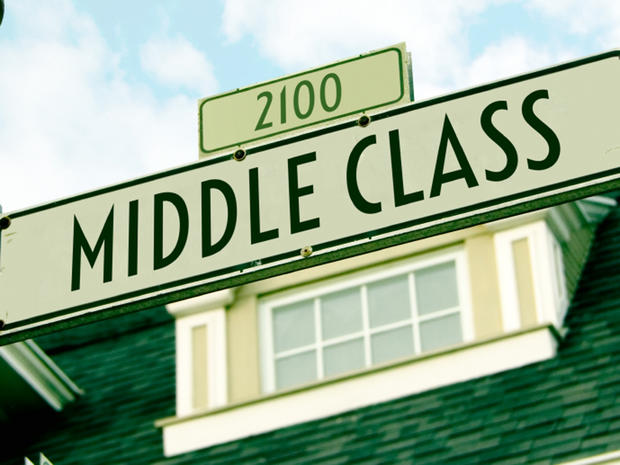Which economic class are you in? Try this tool
After more than four decades as the economic majority in the U.S., the middle class is now merely 50 percent of the country, equivalent in size to upper-income and lower-income households combined, according to new research that decries "the hollowing of the American middle class."
"Since 1971," the nonpartisan Pew Research Center noted on Wednesday, "each decade has ended with a smaller share of adults living in middle-income households than at the beginning, and no single decade stands out as having triggered or hastened the decline."
The long-term demographic shift could signal "a tipping point," according to Pew's analysis, which used government data in counting 120.8 million adults in middle-income households in early 2015, compared to 121.3 million in both lower- and upper-income households.
Pew defines middle-income Americans as a range that includes adults whose annual household income is two-thirds to double the national median (see map at bottom to see how Americans' income breaks down by county). This means roughly $24,000 to $73,000 for a one-person household in 2014 pre-tax dollars, around $42,000 to $126,000 for a household of three and about $54,000 to $162,000 for a household of five.
By those definitions, the middle class made up 50 percent of the adult population in 2015, down from 61 percent in 1971.
The Pew report offers this online tool to determine which economic class you fall into:
Click here to access step 2 of the tool.
Other highlights of the Pew report:
- As the middle class lost ground, the bottom and top tiers expanded. Around 20 percent of U.S. adults in 2015 stood on the lowest rungs of the income ladder, up from 16 percent in 1971. Conversely, the count of those at the top doubled, going to 9 percent of adults in early 2015 from 4 percent in 1971.
- Overall household income also was redistributed over the decades: 49 percent of aggregate income went to upper-income households in 2014, up from 29 percent in 1970, while the share going to middle-income households was 43 percent in 2014, down from 62 percent in 1970.
- One sign of the damage wreaked by the financial crisis and 2007-09 recession is that middle-class household wealth declined more than household income did in the past decade. While the median income of middle-class households in 2014 was around 4 percent less than in 2000, median wealth -- or assets minus debts -- plunged about 28 percent.
"When all is said and done, upper-income families, which had three times as much wealth as middle-income families in 1983, had seven times as much in 2013," the report noted.
The analysis bears out a survey published earlier in the year that found four of five Americans saying it's harder to be middle class today than it was 25 years ago.

